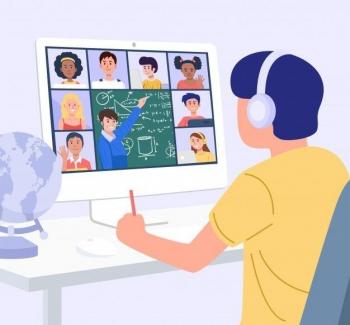Breaking Barriers: How Nebraska's Inclusive Education Model Benefits All Students

Nebraska's Inclusive Education Model: How Special Needs Students Thrive Alongside Peers
What if the key to better educational outcomes for students with disabilities lies not in separation, but in inclusion? Why do some schools succeed at integrating special education students while others struggle? How can states create systems that benefit all learners? Nebraska's innovative approach to inclusive education offers compelling answers to these questions.
The Power of Inclusive Classrooms
Nebraska has made significant investments in placing special education students in general education classrooms alongside their peers, and the results have been promising. This approach, known as inclusive education, moves away from the traditional model of segregating students with disabilities. Instead, it creates learning environments where all students benefit from diversity and tailored support.
Research shows that when special education students learn in general education settings, they often make greater academic progress. But the benefits extend beyond academics—inclusive classrooms foster social skills, empathy, and a sense of community among all students. Nebraska's data reveals that students with disabilities in inclusive settings are more likely to graduate and pursue post-secondary education.
A real-world example comes from Lincoln Public Schools, where a student with Down syndrome participates in mainstream classes with appropriate supports. His classmates have learned valuable lessons about diversity and inclusion, while he has developed stronger academic and social skills than predicted under traditional special education models.

Nebraska's Strategic Investment
Nebraska didn't achieve these results by accident. The state made deliberate policy changes and financial investments to support inclusive education. This included training for general education teachers, funding for classroom aides, and restructuring special education services.
One key initiative was the Special Education Leadership Academy, which trained administrators to implement inclusive practices. The state also provided grants to schools demonstrating commitment to inclusion. These strategic investments created a ripple effect—as some schools saw success with inclusion, others followed suit.
For instance, Omaha Public Schools used state funding to create co-teaching models where special education and general education teachers work together in the same classroom. This approach has led to improved outcomes for all students, not just those with disabilities.

Teacher Training and Support Systems
Successful inclusion requires more than just placing students together—it demands proper teacher preparation and ongoing support. Nebraska addressed this through comprehensive professional development programs focused on:
- Differentiated instruction techniques
- Behavior management strategies
- Collaborative teaching methods
- Adaptive technology use
The state also created mentorship programs pairing experienced inclusive educators with those new to the approach. At Kearney Public Schools, this mentorship model helped a first-year teacher successfully include a student with autism in her third-grade class, using strategies like visual schedules and sensory breaks.

Measuring Success Beyond Test Scores
While academic improvement is important, Nebraska's approach recognizes that success for special education students encompasses multiple dimensions. The state tracks:
- Social-emotional development
- Peer relationships
- Self-advocacy skills
- Post-school outcomes
At Grand Island Senior High, a student with cerebral palsy not only improved academically in inclusive classes but also formed meaningful friendships and gained confidence to speak up about her needs—outcomes that standardized tests alone couldn't capture.

Challenges and Solutions
Implementing inclusive education isn't without challenges. Some teachers initially resisted, concerned about increased workload. Others worried about meeting all students' needs simultaneously. Nebraska addressed these concerns through:
- Small class size reductions
- Additional planning time for teachers
- Access to specialists
- Gradual implementation plans
In North Platte, a middle school phased in inclusion over three years, allowing time for staff training and adjustment. This measured approach led to greater buy-in and eventual success.

The Road Ahead for Inclusive Education
Nebraska's experience offers valuable lessons for other states considering inclusive education models. Key takeaways include:
- Systemic change requires both top-down policy and bottom-up implementation
- Teacher support is as crucial as student support
- Success should be measured holistically
- Community engagement builds sustainable programs
As more schools adopt inclusive practices, Nebraska continues to refine its approach, proving that when all students learn together, everyone benefits.







